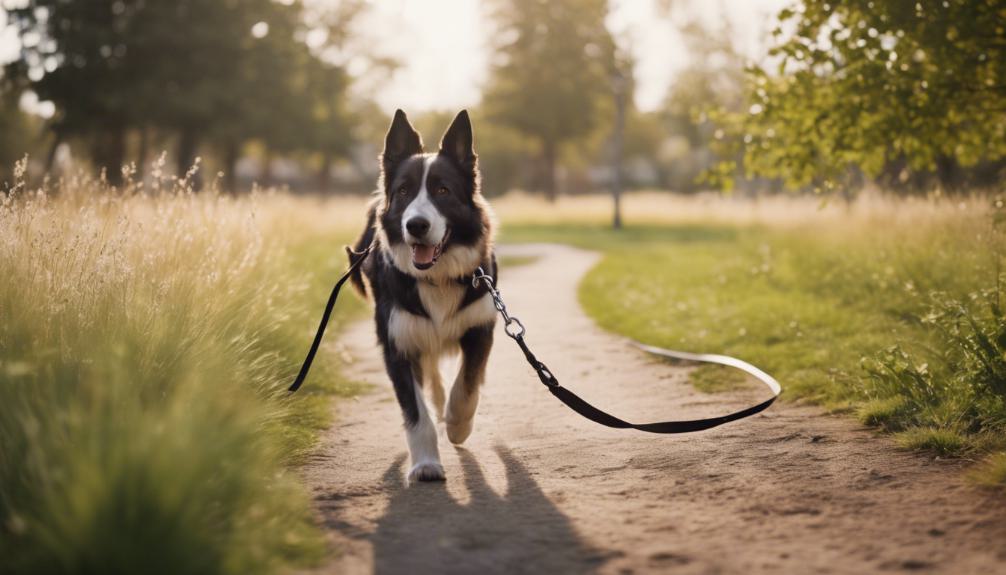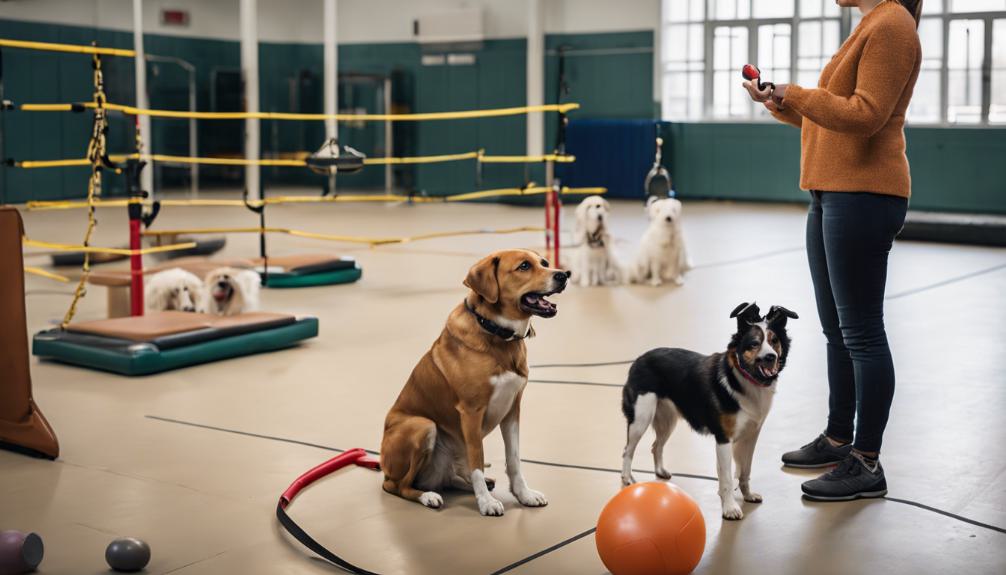How to Train a Grown Dog? Adult Dog Training Essentials
To train a grown dog effectively, understand their behavior first. Use positive reinforcement techniques for best results, as adult dogs respond well to this method. Master leash training to guarantee control and safety during walks. Consistency is key when teaching basic commands; start in a distraction-free area with tasty treats. Strengthen your bond through training for a harmonious relationship. Each step builds a solid foundation for further growth and insight.
Understanding Adult Dog Behavior
To effectively train your adult dog, it’s important to understand their behavior patterns and history. Regarding training an older dog, the saying ‘you can’t teach an old dog new tricks’ doesn’t always hold true. Adult dogs have longer attention spans and more self-control than puppies, making training a bit easier. However, they may have established habits that require patience and consistency to change.
Senior dogs, in particular, may have physical limitations or health concerns that need to be taken into account during training. By tailoring your approach to your adult dog’s specific behavior and past experiences, you can effectively teach them new behaviors and strengthen the bond between you and your furry companion through positive reinforcement techniques.
Positive Reinforcement Techniques
Positive reinforcement techniques involve rewarding your adult dog’s desired behaviors with treats, praise, or playtime to encourage their learning and development. This reward-based training method is highly effective for adult dogs as they learn to associate good behaviors with positive outcomes.
By using positive reinforcement, you can teach old dogs new tricks and shape their behavior in a gentle and encouraging way. Research has shown that dogs respond well to positive reinforcement, creating a stronger bond between you and your furry companion.
It’s essential to use the right training tools and techniques to train your dog effectively. Professional dog trainers often recommend positive reinforcement as a way for adult dogs to learn new behaviors and maintain them over time.
Importance of Leash Training

Leash training plays an important role in ensuring control and safety during walks with your adult dog. It helps prevent leash pulling, making your walks more enjoyable.
When introducing the leash, reward calm behavior to set a positive tone for training. Techniques like the Tree Method and Drunk Walk can effectively deter leash pulling tendencies.
Consistent training and practicing in various environments are key to reinforcing good leash manners in adult dogs. Remember to maintain a positive tone and approach throughout the training process.
Teaching Basic Commands
When teaching basic commands to your adult dog, maintain consistency and use positive reinforcement to effectively instill obedience behaviors.
Start in a distraction-free environment with high-value treats, ensuring your older dog stays focused. Begin with simple commands like sit and gradually increase difficulty as they master each one.
Practice these commands in different settings to solidify their comprehension. Training basic commands not only enhances communication but also strengthens the bond and trust between you and your adult dog.
Building a Strong Owner-Dog Bond

Strengthening the connection with your adult dog is vital for fostering trust, admiration, and a harmonious relationship. By incorporating positive reinforcement and consistent training methods, you can deepen the emotional bond and enhance communication with your furry companion. This bond goes beyond just obedience; it forms the basis for a lifelong partnership built on mutual respect. To emphasize the significance of building a strong owner-dog bond, consider the following table:
| Bond | Communication | Trust |
|---|---|---|
| Admiration | Positive Reinforcement | Training Methods |
Investing time and effort in nurturing the owner-dog bond not only creates a well-behaved pet but also a loyal and affectionate companion. Embrace this journey of connection and watch your adult dog thrive under your guidance.
Frequently Asked Questions
What Is the Best Way to Train an Adult Dog?
When training an adult dog, focus on positive reinforcement. Be consistent with commands and rewards. Stay patient as you teach new behaviors. Use tools like treats and a leash. Approach training with a positive attitude for a rewarding experience.
What Is the Best Training for Older Dogs?
When training older dogs, focus on rewarding good behaviors consistently. Strengthen your bond by using positive reinforcement. Basic obedience training can improve their public behavior and quality of life. Enjoy this rewarding experience with your furry friend!
Can a Full Grown Dog Be Trained?
Yes, you can train a full-grown dog. With patience, consistency, and positive reinforcement, adult dogs can learn new behaviors and commands. Strengthening the bond between you and your dog while enjoying the training process.
What Equipment Do You Need to Obedience Train a Dog?
You need a leash for control, treats to reward good behavior, a training collar for leash manners, clickers to mark success, and a distraction-free environment for effective obedience training with your dog.
Conclusion
To sum up, training a grown dog may seem challenging, but with patience, consistency, and positive reinforcement, you can effectively teach your furry friend new behaviors and commands.
Remember to establish a strong bond with your dog through regular training sessions and plenty of love and attention.
By grasping your dog’s behavior, using leash training, and practicing basic commands, you’ll set your adult dog up for success and a happy, well-behaved life.

